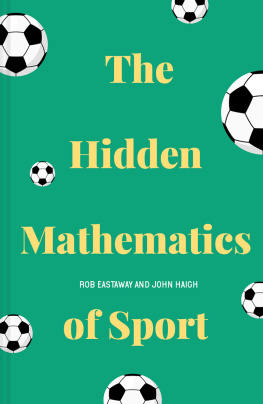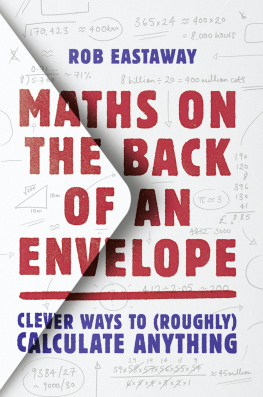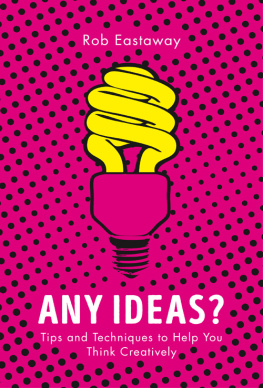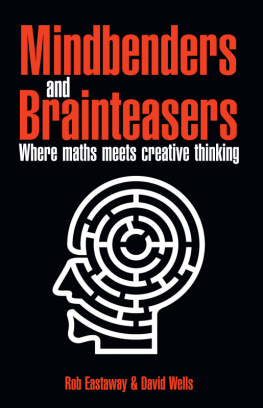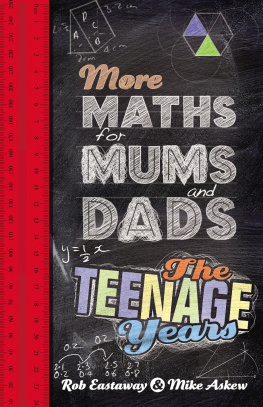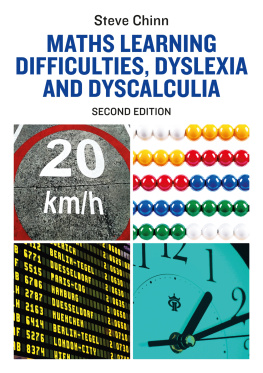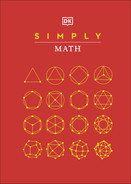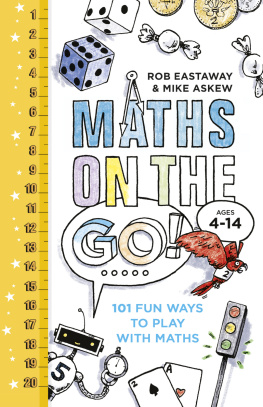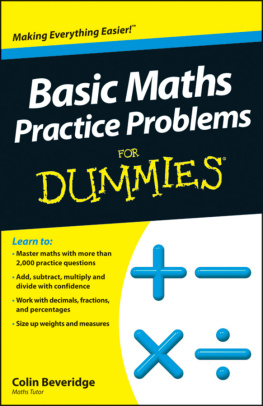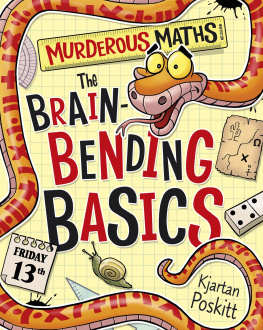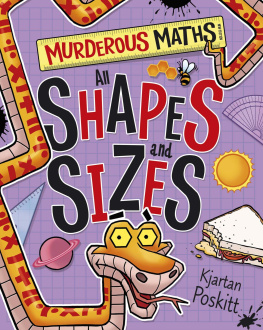CONTENTS
About the Authors
R OB E ASTAWAY has written several best-selling books that connect maths with everyday life, including Why do Buses Come in Threes? His latest book with Mike Askew, aimed at parents of teenage children, is More Maths for Mums and Dads. He appears regularly on radio and has given talks about maths across the UK to audiences of all ages, at locations ranging from the Royal Exchange Theatre to Pentonville Prison.
Married with three children, he lives in south London.
M IKE A SKEW is Professor of Primary Education at Monash University, Melbourne. Until recently he was Professor of Mathematics Education at Kings College, University of London. A former primary school teacher, he now researches, speaks and writes on teaching and learning primary mathematics. For the academic year 2006/07 he was Visiting Distinguished Scholar at City College, City University of New York.
He has published numerous reports, articles and teacher guides, and is constantly in demand, nationally and internationally, for his entertaining and incisive conference talks. He is also a skilled magician.
This ebook is copyright material and must not be copied, reproduced, transferred, distributed, leased, licensed or publicly performed or used in any way except as specifically permitted in writing by the publishers, as allowed under the terms and conditions under which it was purchased or as strictly permitted by applicable copyright law. Any unauthorized distribution or use of this text may be a direct infringement of the authors and publishers rights and those responsible may be liable in law accordingly.
Epub ISBN: 9781409089131
Version 1.0
2 4 6 8 10 9 7 5 3 1
Square Peg, an imprint of Vintage Publishing,
20 Vauxhall Bridge Road,
London SW1V 2SA
Square Peg is part of the Penguin Random House group of companies whose addresses can be found at global.penguinrandomhouse.com.

Copyright Mike Askew and Rob Eastaway 2010
Illustrations copyright Chris Lyon 2010
Design copyright Peter Ward for Random House 2010
Rob Eastaway and Mike Askew has asserted his right to be identified as the author of this Work in accordance with the Copyright, Designs and Patents Act 1988
First published in Great Britain in 2010 by Square Peg
This revised edition published by Square Peg in 2013
www.vintage-books.co.uk
A CIP catalogue record for this book is available from the British Library
ISBN 9780224086356
PREPARATION
Q. Find x.
We cant vouch for the authenticity of this famous example of a creative answer to a maths question, but all the others that youll find in the book genuinely cropped up in the classroom.
INTRODUCTION
Its the moment that many parents dread: Can you help me with my maths homework? Many years, perhaps decades, ago, you went through all this as a child yourself, of course. But it feels very different when youre the one from whom help is being sought. And in any case, things have changed: the maths has changed, the methods have changed, and perhaps the attitudes of children to their parents have changed. Thats certainly what parents say, though parents may have been saying this for centuries.
Of all the subjects covered at school, maths is the one that worries parents the most. Weve met many a parent whose concern is that their child is beginning to bring home work that the parent cant do. But there are many parents who are at least competent, often very good, at maths, and they have a different worry. The problem is: they do it differently at school these days. Attempts by Dad to demonstrate subtraction by adding one and paying ten at the bottom are met by a glazed look from a bewildered child, who finally goes to Mum saying, Dad is just confusing me.
This book is to help you as a parent to re-engage with maths, to see the subject in a new light, to help you to understand why they do things differently these days (some of it is for very good reasons), and to help you to better understand what is going through your childs head when she or he claims to just not get it. More than anything, our aim is to put a bit more enjoyment into maths at home something that seems to be in desperately short supply.
School maths is a huge subject, and we couldnt hope to cover it all in a single book. Weve therefore concentrated on the basics, the stuff that children cover (or should cover) in primary school. We say basic, though much of it is really not that basic at all. In fact, some of the questions that have been posed in tests for eleven-year-olds (commonly known as SATs) would tax most adults. But in this book there will be no sines or cosines, no vectors, and absolutely no quadratic equations. If you want to read about those, read our More Maths for Mums and Dads.
THE BIG QUESTIONS
Talking to mums and dads, there are some issues that crop up again and again. Weve called these the Big Questions. We have identified four of them, and they are so important that we have brought them to the front of the book.
1. Why do they do it differently these days?
When their children reach the age of six, many parents get a dreadful shock. Not only do they discover that what used to be called maths lessons are now called numeracy, but they find their children are bringing home vocabulary and methods that the parents dont recognise. In many households, this introduces a problem. Parents keen to help realise that (a) they dont understand what the child is doing, and therefore dont know if it is right or not, and (b) when they try to demonstrate how to do something, all they manage to do is confuse the child. As a result many parents feel frustrated and helpless.
So what is going on, and, as a parent, what can you do about it?
In most schools, the days are gone when maths lessons were endless pages of sums to be done in silence, using techniques for addition and multiplication that dated back hundreds of years. Todays lessons are much more about collaboration and investigation: long periods of silence are rare, even in maths lessons.
The techniques have changed, too. One example of how things have changed is the way that children perform a large multiplication such as 79 43. Most parents were taught the method of long multiplication, and many still use it to do calculations on the back of an envelope. However, there arent many parents who can explain why it works. It is, if you like, a black box for which you turn the handle and the correct answer comes out at the far end (you hope). Today, the emphasis in schools is on teaching methods that help children to understand the underlying maths, thus (in theory) reducing the chance of them making mistakes, and building a foundation for understanding more complicated mathematics later on.
This move from learning techniques learning how to understanding the maths behind them learning why came about for several reasons. Firstly, it was realised that there wasnt a halcyon time when everybody left primary school able to perfectly carry out long multiplication, long division, and so on. Surveys into levels of adult understanding knocked this myth on the head.



